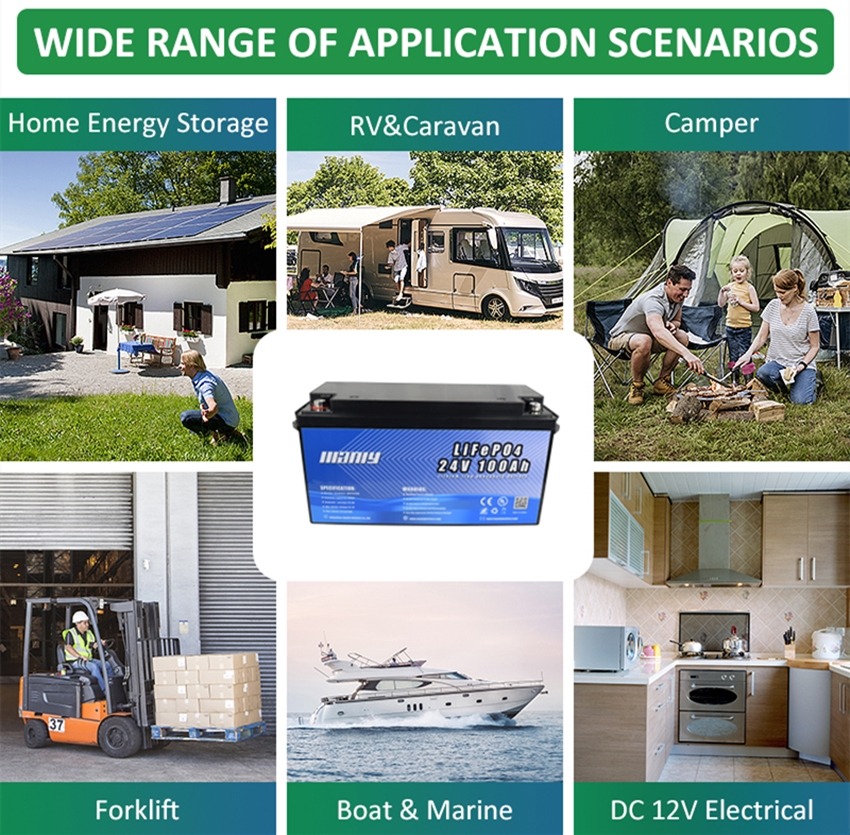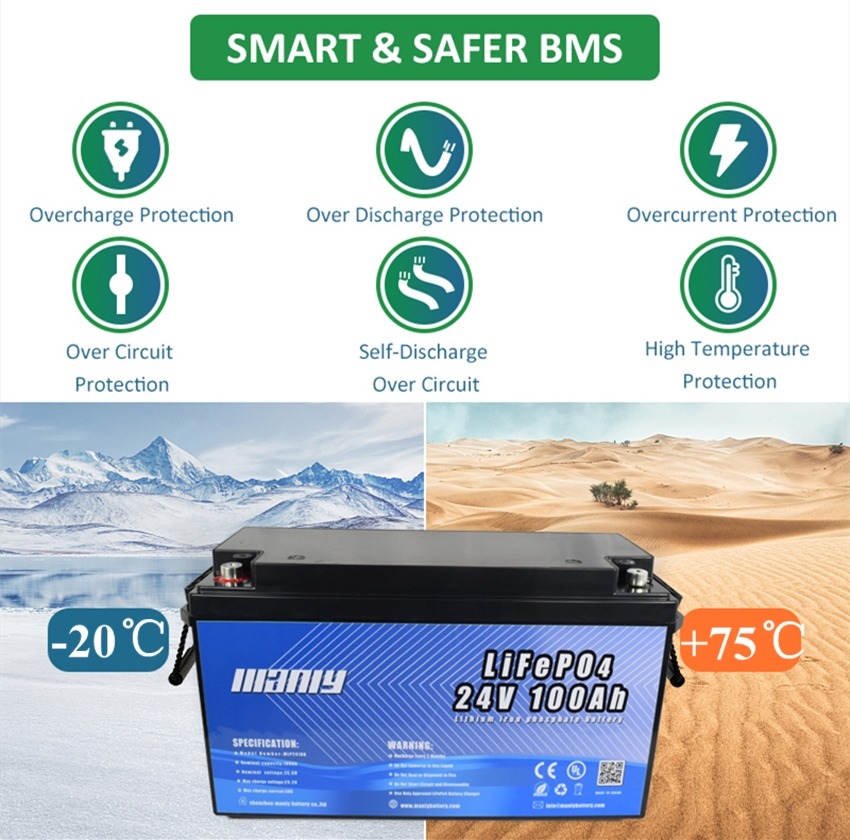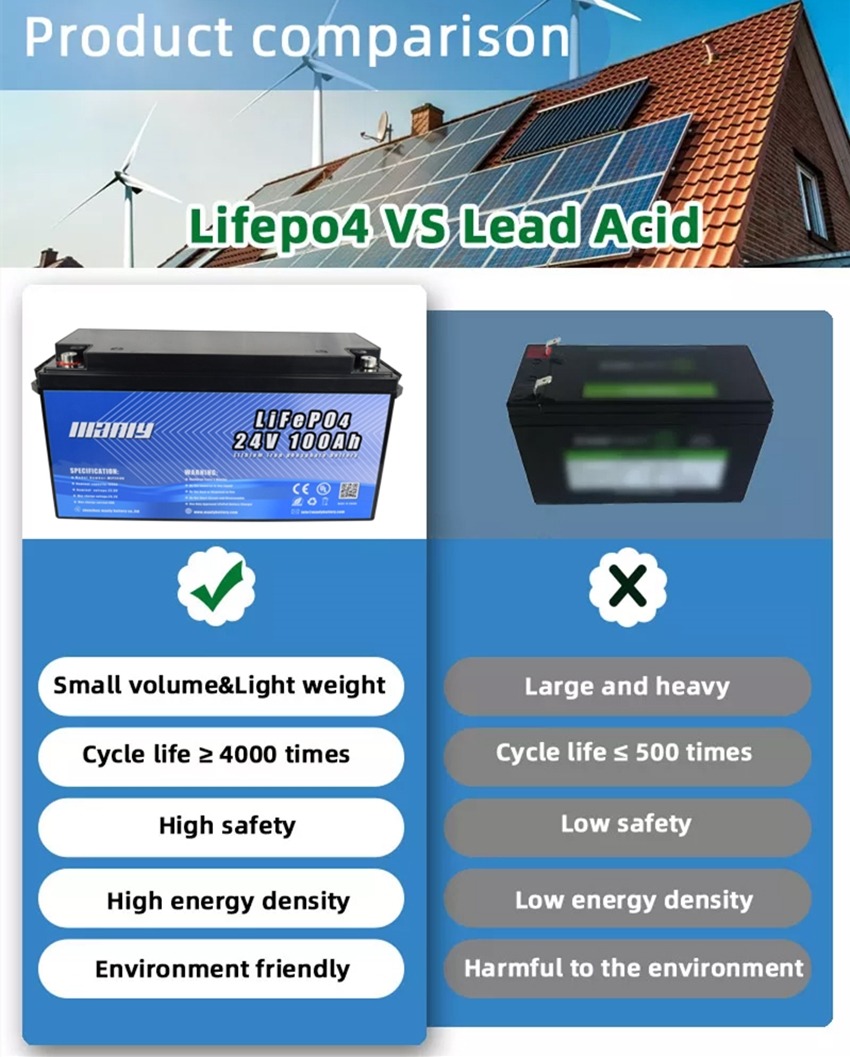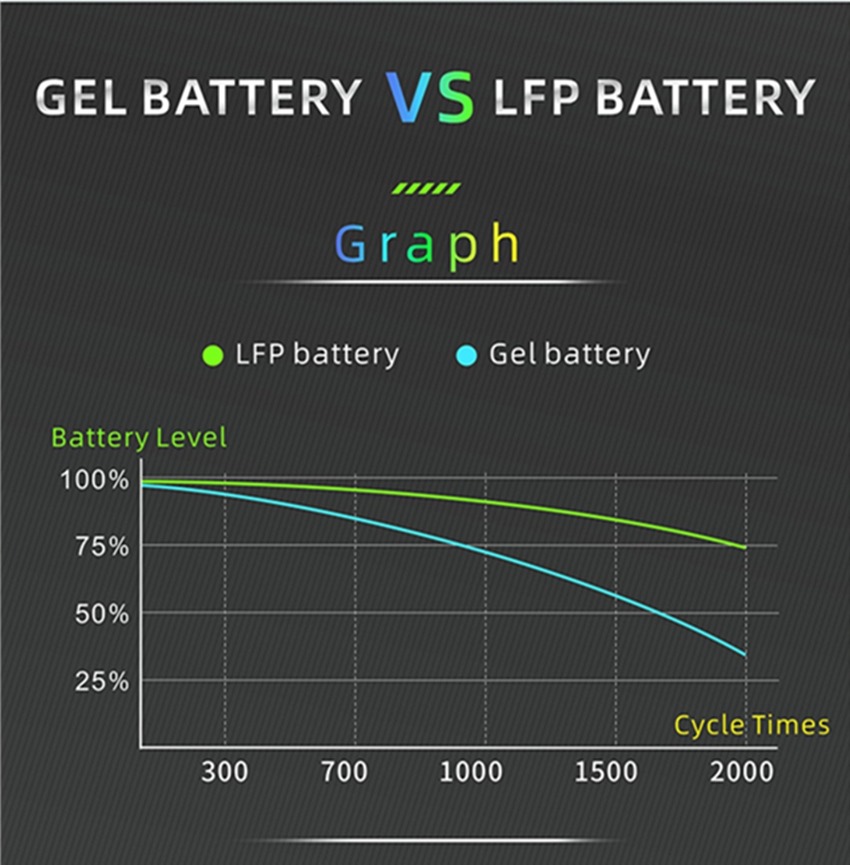LiFePO4 vs Lithium Ion: The Best Battery for You
Table of Contents
- LiFePO4 vs Lithium Ion: The Best Battery for You
- 1. What Is LiFePo4 Battery
- 2. Comparing the Chemical Differences between LiFePO4 and Lithium Ion Batteries
- 3. LiFePO4 vs. Lithium Ion Batteries: A Detailed Comparison of Their Performance
- 4. LiFePO4 Batteries Compared to Non-Lithium Alternatives: A Comprehensive Overview
- 5. Choosing Between LiFePO4 and Lithium Ion Batteries: Finding the Best Fit for Your Needs
- 6. Exploring the Versatility of LiFePO4 Batteries Across Various Applications
1. What Is LiFePo4 Battery
The LiFePO4 lithium iron phosphate battery is a modern, safe, and efficient type of lithium battery. This rechargeable battery is popular for its long-lasting power. Being new and cutting-edge, the LiFePO4 lithium iron phosphate battery leads in lithium tech. Its unique chemical make-up is its strength. Unlike common lithium-ion batteries, used LiFePO4 cells don’t contain nickel or cobalt. This makes them safer and more eco-friendly. LiFePO4 battery cycles are used in many things. They’re found in off-grid power storage, backup power systems, small electronics, and electric cars.
2. Comparing the Chemical Differences between LiFePO4 and Lithium Ion Batteries
LiFePo4 and Li-ion batteries are rechargeable batteries that use lithium ions to harness and release electrical energy. While they are similar in many ways, they also exhibit some glaring differences.
lifepo4 lithium iron phosphate battery
The LiFePO4 lithium iron phosphate battery is a special type of lithium-ion battery. This battery uses a unique mix of chemicals. It is now more used in off-grid and backup power.
LiFePO4 lithium iron phosphate batteries get their name from their special cathode. The cathode is made of lithium iron phosphate. The anode is usually carbon. The electrolyte is a lithium salt in an organic liquid. The energy of this battery is 90/120 watt-hours per kilogram. The usual voltage is 3.20V or 3.30V. The battery can be charged at 1C and discharged at 1-25C.
The LiFePO4 battery is safer than other lithium-ion batteries. It is made with iron, phosphorous, and oxygen. These things bond together strongly. This makes the battery stable and less likely to get too hot.
The LiFePO4 battery does not use nickel or cobalt. These metals are running out and often come from bad sources.
Lithium Ion Batteries
Lithium-ion batteries have different kinds of chemicals in them. They can have lithium iron phosphate (LiFePO4), lithium manganese oxide (LMO), or lithium cobalt oxide (LiCoO2).
These batteries have three main parts: a cathode, an anode, and an electrolyte. The electrolyte is made of lithium salt. The anode is made of carbon. The cathode is different in each battery. It is made of one of the lithium metal oxides.
Lithium-ion can store 150/200 watt-hours per KG of energy. Its voltage is 3.6. It can be discharged at 1C and charged between 0.7C and 1.0C.
All these batteries charge and discharge the same way. The lithium ions move from the cathode to the anode. Electrons move the other way. This makes electricity.
3. LiFePO4 vs. Lithium Ion Batteries: A Detailed Comparison of Their Performance
safety
LiFePO4 lithium iron phosphate batteries are the safest kind of lithium batteries. This is because lithium iron phosphate is more stable than other materials. Lead acid and other batteries are not as stable as LiFePO4.
LiFePO4 does not burn. It can handle high heat and it doesn’t break down. It doesn’t get too hot, even at room temperature.
A LiFePO4 battery won’t catch fire or explode if it gets very hot or damaged. This makes people feel safe. They use these batteries every day in RVs, boats, scooters, and liftgates.
Lithium-ion chemistry is not as safe as lithium iron phosphate. It has lots of energy, but this can make the battery unstable. A lithium-ion battery can get too hot when it charges. It can experience thermal runaway, which is not safe.
Energy Density
Li-ion batteries can hold more energy than LiFePO4 lithium iron phosphate batteries. Energy density shows how much energy a battery can hold for its size or weight. Li-ion batteries can hold more power for their size or weight than used LiFePO4 cells.
For example, a Li-ion battery can hold about 45-120 Wh per pound (100-265 Wh per kg). But, a LiFePO4 battery can hold about 40-55 Wh per pound (90-120 Wh per kg). The reason why Li-ion batteries can hold so much energy is that there are many types, including ome types are only used in electric cars and other things.
Weight
The weight of a battery can tell you its energy density. LiFePO4 batteries might weigh a bit more than some Li-ion batteries. But some LiFePO4 batteries are lighter because they use lighter metals. They are almost 50% lighter than lithium manganese oxide batteries. They are even up to 70% lighter than lead acid batteries.
High energy Li-ion batteries like nickel-cobalt-aluminum (NCA) and nickel-cobalt-manganese (NCM) are not the best for off-grid and solar use. People prefer to use safer and longer-lasting batteries like LiFePO4 for home power. Safety is more important than a small difference in weight.
Even though used LiFePO4 cells are safe and last long, they are still light. They hold a lot of power for their weight. The Manly 12v100ah lifepo4 battery can hold 1280 Wh of energy. It only weighs 47.3 lbs (21.5 kg). This is light enough to save weight on your scooter, boat, RV, or industrial use.
Temperature Range
LiFePO4 lithium iron phosphate batteries work well in many temperatures. They can work from -4°F (-20°C) up to 140°F (60°C).
But, Li-ion batteries can only work from 32°F (0°C) up to 113°F (45°C). People must keep Li-ion batteries in places with controlled temperature in hot or cold weather.
LiFePO4 batteries can be kept safe in a home, shed, garage, or inside without air conditioning. They handle temperature changes well. This means you can store the battery in many places without it getting hurt or working less. For example, a Manly Battery can have a custom lifepo4 BMS. The BMS will stop if the temperature gets over 167°F / 75°C.
Lifespan
Lithium-ion batteries have lots of energy. But, this can make them unstable, especially in hot places. They can be charged and used from 500 to 1,000 times. However the temperature can affect how they work.
Lifepo4 lithium iron phosphate batteries can be charged and used 1,000 to 10,000 times. They can handle high heat and still work well. They can keep working for a long time before they need to be charged again.
The long lifepo4 battery lifespan helps the environment. It reduces e-waste. These batteries are also good for the environment because they don’t have nickel or cobalt.
Your lifepo4 battery can last 5 or 6 times longer than a lithium-ion one. This means you won’t need to buy new batteries as often.
4. LiFePO4 Batteries Compared to Non-Lithium Alternatives: A Comprehensive Overview
Lead Acid Batteries
- Environmentally friendly: LiFePO4 lithium iron phosphate batteries do not pollute (not absolute), while lead-acid batteries pollute with heavy metal lead.
- Safety: The safety of lithium-ion batteries varies with different materials, while the technology of lead-acid batteries is quite mature and safer than lithium-ion batteries.
- Energy ratio: Lithium-ion batteries have about 40% higher weight and volume energy capabilities than lead-acid batteries.
- Price: The price of a lithium-ion battery with the same capacity is more than double that of a lead-acid battery.
- Lifespan: Currently, general LiFePO4 can be charged 1500 times without memory effect. After 1500 charges, it has about 85% storage capacity. In contrast, lead-acid batteries last about 500 times and have a clear memory effect.
- Self-discharge rate: LiFePO4 lithium iron phosphate batteries have a monthly self-discharge rate of <3%, while lead-acid batteries have a 15~30% rate, a clear difference.
- Discharge characteristics: Simply put, for batteries of the same capacity, lithium-ion batteries can discharge about 30% more electricity under high current discharge than lead-acid batteries.
- Voltage platform: The voltage platform of LiFePO4 lithium iron phosphate batteries is >3V, while that of lead-acid batteries is 2V.
Gel Batteries
First, let’s talk about lifespan. Gel batteries have a lifespan of around three hundred cycles, while LiFePO4 lithium iron phosphate batteries can reach up to three thousand cycles! They far outperform gel batteries!
Next is energy density. Each kilogram of LiFePO4 lithium iron phosphate battery can reach one hundred and fifty watts per kilogram. The maximum density of gel batteries does not exceed one hundred watt-hours.
5. Choosing Between LiFePO4 and Lithium Ion Batteries: Finding the Best Fit for Your Needs
LiFePO4 lithium iron phosphate battery is the top lithium battery tech, especially for backup power and solar systems. It also powers 31% of electric vehicles (EVs). Big companies like Tesla and China’s BYD are using more LiFePO4 batteries.
If you want a battery for regular off-grid use, choose LiFePO4. It is worth it because it is safe. You don’t have to worry about it getting too hot like Li-ion batteries can.
LiFePO4 batteries also last longer. They have lifepo4 battery cycles that are over five times longer than Li-ion batteries. This means your LiFePO4 batteries will still work when Li-ion batteries stop working. You will save money and produce less e-waste.
Companies like Manly Battery use LiFePO4 batteries for backup power systems and solar generators.
Buy a solar generator or power station from Manly Battery today. They use LiFePO4 batteries. These batteries are reliable, need little maintenance, and are good for the environment.
6. Exploring the Versatility of LiFePO4 Batteries Across Various Applications
LiFePO4 lithium iron phosphate battery is useful for many things. Here are a few examples:
Fishing boats and kayaks: Manly’s 12v lithium battery charges fast and lasts long. This gives you more time on the water. The battery is also light, making it easy to move your boat or kayak.
Electric scooters: Manly’s electric scooter battery is light, so it doesn’t slow you down. You can charge it a bit for short trips without hurting the battery.
Solar setups: You can take light LiFePO4 batteries anywhere. Even up a mountain or far from the grid. Use them to capture the sun’s power.
Many more: Manly lithium iron phosphate batteries can power many other things. Like flashlights, e-cigarettes, radios, emergency lights, and much more.






